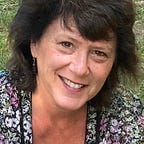Friendly people, beautiful homes, a central location and rich history. Encino may not have gotten its own post office until 1938, but the area itself has attracted settlement for thousands of years.
In the early part of the 20th Century, scores of film pioneers and movie star wannabes flooded into Southern California for the weather and wide open spaces. The San Fernando Valley (SFV) had enough land for not only citrus groves, walnuts and wheat, but also the acreage to house the studios of Universal Pictures, Warner Brothers, Disney and others, who built their stages, production companies and homes in the Valley area.
- History Springs Eternal at Los Encinos State Historic Park
Before the Spanish arrived in 1769 at the corner of what is now Balboa and Ventura Boulevard, Encino’s natural spring helped sustain Native American tribes for ages. During the era of the Ranchos cattle was raised on the land, and a roadhouse was built in 1859 to serve tired and thirsty travelers. Several structures have since been renovated and repaired, and the park is now an historical center. The ancient lake still hosts an assortment of ducks and geese, providing an idyllic view for the patrons of nearby Lakeside Café, which serves healthy fare in hearty portions.
2. Setting the Stages
Picture that classic scene from RKO’s “It’s a Wonderful Life.” Jimmy Stewart has just been given back his old life, and he’s running through the snowy streets of Bedford Falls, shouting appreciative Christmas greetings to all the places he used to despise.
Then, imagine the sets fading away and all of a sudden you’re in the midst Encino’s Balboa Park soccer fields. From 1929 to 1953, the land including and surrounding Balboa Park was part of the RKO Movie Ranch.
Balboa Park Sports Complex
3. Where the Stars Take Off Their Shoes
The San Fernando Valley gained the nickname ‘Bedroom of the Stars” in the years following the influx of the movie studios. Miles from the Hollywood Walk of Fame and the cement imprints of famous hands and shoes, the Valley was still primarily rural. It was the place where the movie stars came home and took off those shoes. Al Jolson lived with Ruby Keeler at the top of a wide, winding driveway on Louise. Clark Gable and Carole Lombard raised chickens at their estate on Petit Avenue, and Gable was known to usher reporters into his barn during interviews so he could milk the cow.
with Douglas Fairbanks in “Reaching for the Moon” (1930)
Actor Edward Everett Horton, the beloved film comedian, bought several acres in Encino way back in 1925. He lived at 5521 Amestoy Avenue, and continued to be a huge sponsor and supporter of Encino until his death. Horton’s house was sacrificed to make way for a portion of the Ventura Freeway, but a one block section of Amestoy Avenue, between the 101 and Burbank Blvd, was renamed “Edward Everett Horton Lane” in his honor.
The hills of Encino are peppered with estates, and Ventura Boulevard is packed with fine dining and shopping, professional services, financial institutions, high performing schools and world class medical centers. Those who grew up in the area may remember the orange groves long gone, but those who live here now are the ones who have truly arrived.
